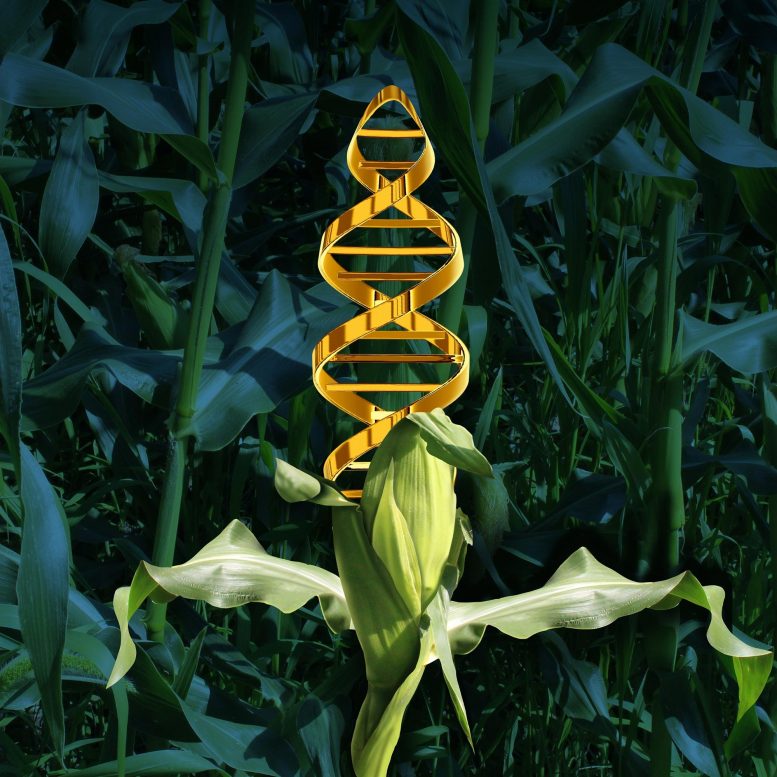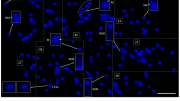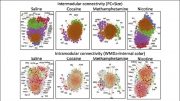
Grasses use lateral gene transfer to acquire DNA, gaining advantages in growth and adaptation.
Grass crops are able to bend the rules of evolution by borrowing genes from their neighbors, giving them a competitive advantage, a new study has revealed.
Research, led by the University of Sheffield, is the first to show that grasses can incorporate DNA from other species into their genomes through a process known as lateral gene transfer.
The stolen genetic secrets give them an evolutionary advantage by allowing them to grow faster, bigger or stronger, and adapt to new environments quicker. These findings could inform future work to create crops that are more resistant to the effects of climate change and help to tackle food security problems.
The Sheffield team studied grasses, which include some of the most economically and ecologically important plants, such as the most globally cultivated crops wheat, maize, rice, and barley.
Dr. Luke Dunning, senior author of the research from the Department of Animal and Plant Sciences at the University of Sheffield, said: “Grasses are taking an evolutionary shortcut by borrowing genes from their neighbors. By using genetic detective work to trace the origin of each gene, we found over 100 examples where the gene had a significantly different history to the species it was found in.
“The findings may make us as a society reconsider how we view GM technology, as grasses have naturally exploited a very similar process. If we can determine how this process is happening it may allow us to naturally modify crops and make them more resistant to climate change.
“What we are seeing is not hybridization, but the consequences are similar. Lateral gene transfer can move genetic information across wider evolutionary distances, which means it can potentially have even bigger impacts.
“Whilst only a relatively small proportion of genes are transferred between species, this process potentially allows grasses to cherry-pick information from other species. This likely gives them huge advantages and may allow them to adapt to their surrounding environment quicker.
Samuel Hibdige, first author of the research and PhD Researcher from the University of Sheffield, said: “We still don’t know how this is happening or what the full implications are. But, we know it is widespread in grasses, a family of plants that provide a majority of the food we eat.
“We detected foreign DNA in a wide range of grasses with all kinds of life-history strategies indicating it is not restricted to those with a specific trait. However, we did detect a statistical increase in species which possess certain kinds of modified stems called rhizomes.”
Since Darwin, much of our understanding of evolution has been based on the assumption that common descent is the rule for plant and animal evolution, with genetic information passed from parents to offspring.
The team’s next steps will be to determine the biological mechanism behind this phenomenon and to investigate whether this is an ongoing process in crops that contributes to the differences we observe between crop varieties.
Reference: “Widespread lateral gene transfer among grasses” by Samuel G. S. Hibdige, Pauline Raimondeau, Pascal‐Antoine Christin and Luke T. Dunning, 22 April 2021, New Phytologist.
DOI: 10.1111/nph.17328
The research received funding from the European Research Council (ERC), the Royal Society and the Natural Environment Research Council (NERC).









There have been some really cool products from genetic engineers using gene transfer, like in the process of restoring the American Chestnut tree.
I object to the exaggerated and misleading headlines of some of your articles. 1 COMMENTON “NATURALLY GM: CROPS STEAL GENES FROM OTHER SPECIES TO ACCELERATE EVOLUTION”
There is nothing about “stealing” in the article because this is about DNA transfer probably through pollination. There is a lot of “adaptation” among plants.
The article was fascinating until you mentioned GMOs and Climate Change. Crawl off, spawns of Monsanto.
Understanding of the process of lateral gene transfer will provide a robust tool to genetic engineers. They will be able to cope with problems regarding food production, food quality, climate change, shortage of irrigation water, and environmental pollution.
Here is a quotation from a 1981 article from Frank Ruddle’s lab at Yale: “It has been known for many years that under certain conditions, eukaryotic cells can take up large amounts of DNA and transport it into the cell nucleus.” And this exogenous DNA can be incorporated into the germ line. Try this simple experiment: germinate seeds – I used maize – with any DNA lying around the lab. See if deformed seedlings appear at a greater frequency than the control.
The Bible freaks that agitate against GMO foods should read this.
So genetically modified crops are self replicating but on an even more monstrous way! I wish all mad scientists would go fall into a black hole. These crops are not a cure for any human or animal, these crops are the reason we have more disease and cancers. Let nature be as NORMAL and my prayer… God save the bees!